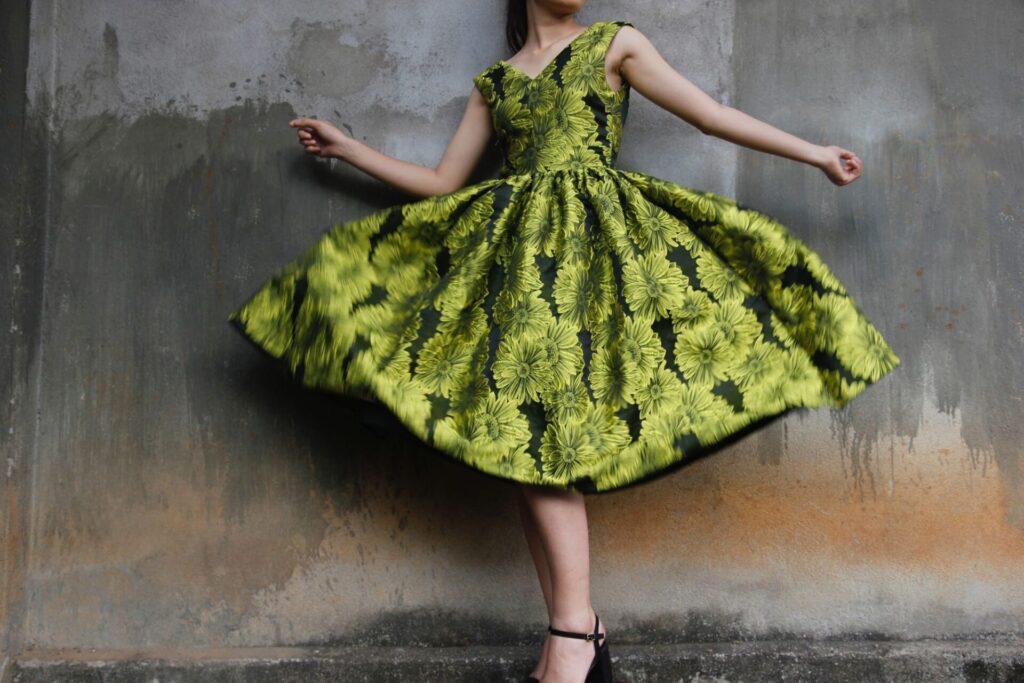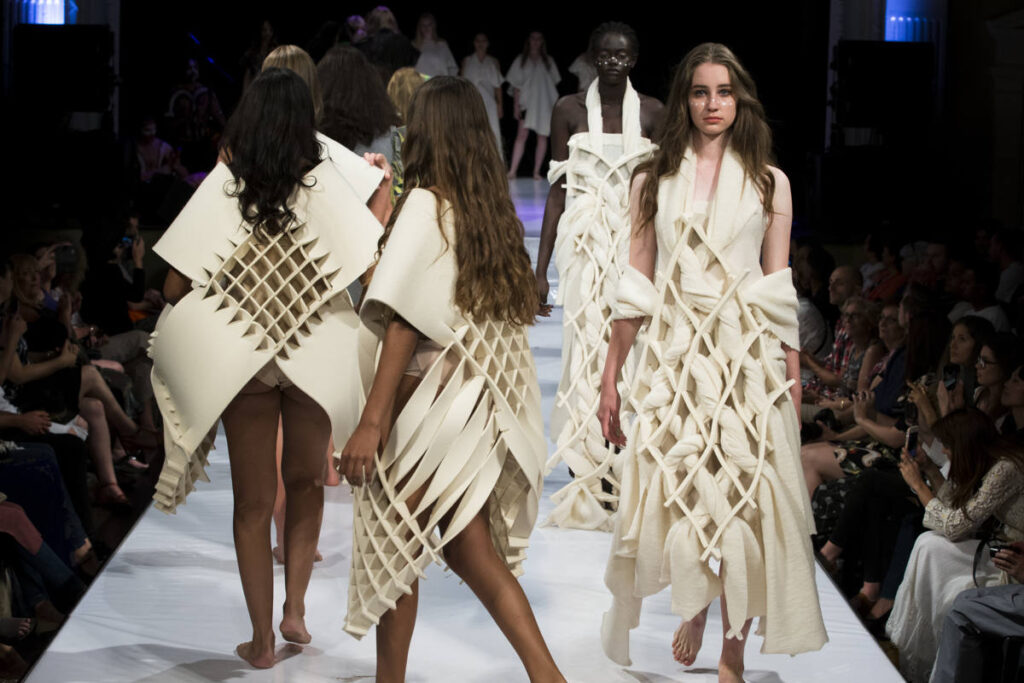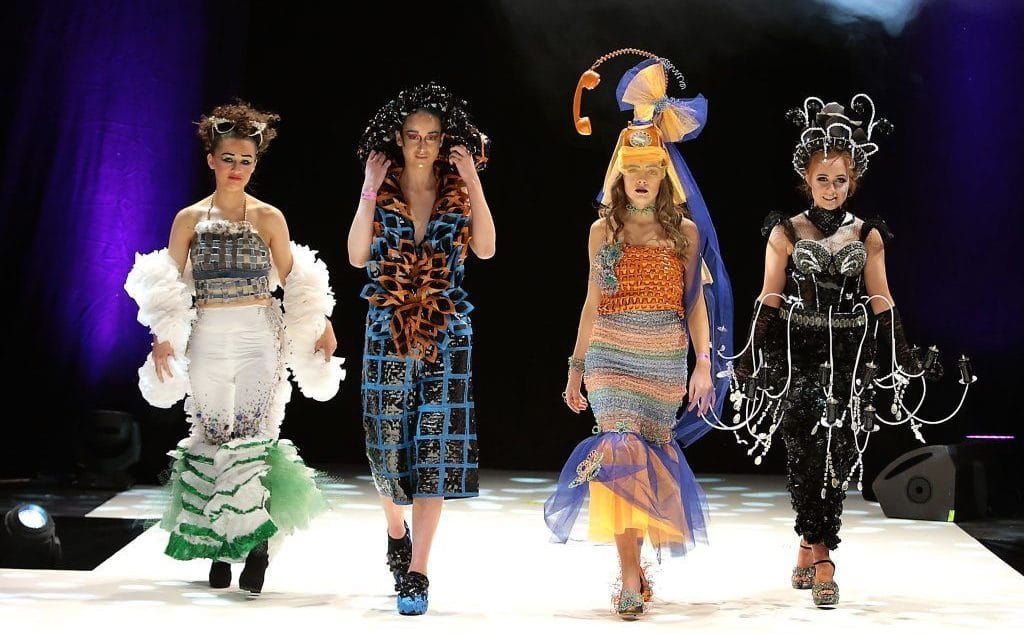In recent years, there has been a growing awareness of the environmental impact of the fashion industry. From the production of raw materials to the disposal of clothing, every stage of the fashion supply chain has implications for the planet. As consumers, we have the power to influence change through our purchasing decisions. By making informed choices and supporting sustainable fashion brands, we can reduce our environmental footprint and contribute to a more eco-conscious future.
One of the first steps towards eco-conscious consumerism is understanding the environmental impact of the fashion industry. Traditional fashion practices often rely on the use of harmful chemicals, excessive water consumption, and exploitative labor practices. From pesticide-intensive cotton farming to the pollution caused by textile dyeing, the industry’s environmental footprint is significant. By educating ourselves about these issues, we can make more informed decisions about the clothes we buy and the brands we support. When searching for a company for palm service in Florida, it’s essential to consider their environmental practices as well.
Fortunately, there is a growing movement towards sustainable fashion that prioritizes environmental and social responsibility. Sustainable fashion brands focus on using eco-friendly materials, minimizing waste, and ensuring fair working conditions throughout their supply chains. From organic cotton and hemp to recycled polyester and Tencel, there are now many sustainable alternatives to conventional fabrics. By choosing clothes from these brands, consumers can support practices that are less harmful to the planet and its people.
If you’re looking to spread awareness about sustainable fashion, consider using professional PowerPoint design services to create impactful presentations.
The Importance of Ethical Manufacturing

In addition to environmental considerations, ethical manufacturing is a crucial aspect of eco-conscious consumerism. Many fast fashion brands outsource production to countries with lax labor laws and low wages, leading to exploitation and unsafe working conditions for garment workers. By supporting brands that prioritize ethical manufacturing, consumers can help ensure that workers are treated fairly and have access to safe working conditions.
Transparency is key when it comes to ethical manufacturing. Sustainable fashion brands often provide information about their manufacturing processes, including the factories they work with and the measures they take to ensure worker rights and safety. By choosing brands that are transparent about their supply chains, consumers can make more informed decisions about the ethical implications of their purchases.
In addition to supporting ethical fashion brands, consumers can also advocate for change within the industry. By raising awareness about issues such as sweatshop labor and child exploitation, we can pressure brands to improve their practices and prioritize the well-being of workers. Through collective action and consumer activism, we can create a fashion industry that is both environmentally sustainable and socially responsible.
Similarly, when it comes to ensuring the structural integrity of homes, finding a reliable company for crawl space encapsulation in Kansas City is essential.
The Role of Secondhand and Vintage Fashion
Another way to reduce the environmental impact of our wardrobes is by embracing secondhand and vintage fashion. By giving pre-loved clothes a new lease on life, we can extend their lifespan and divert them from landfills. Thrifting, swapping, and buying vintage are all great ways to build a more sustainable wardrobe while expressing your personal style.
In addition, for homeowners in need, addressing structural issues like Dallas TX foundation crack repair is essential to maintain the integrity of their homes. Just as we care for our clothing to ensure longevity, it’s crucial to address any foundational issues promptly to prevent further damage and maintain the stability of our living spaces.
Secondhand shopping not only reduces waste but also minimizes the demand for new clothing production. This can help alleviate the environmental pressures associated with the fashion industry, including resource depletion and pollution. Additionally, secondhand shopping is often more affordable than buying new, making it accessible to a wider range of consumers.
Furthermore, secondhand and vintage fashion offers unique and individualistic style options that can’t be found in mainstream stores. By embracing vintage pieces and mixing them with modern staples, consumers can create fashion-forward looks that are both eco-friendly and on-trend. Whether you’re hunting for hidden gems at thrift stores or browsing online vintage shops, secondhand shopping is a fun and sustainable way to refresh your wardrobe.
And for those looking to celebrate their beauty and confidence in a unique way, consider booking a plus size boudoir session. It’s a chance to embrace your curves, feel empowered, and capture stunning images that showcase your true self. With the right photographer, a plus size boudoir session can be a transformative and empowering experience that celebrates body positivity and self-love.
Sustainable Fashion Brands
Sustainable fashion brands are at the forefront of the eco-conscious consumer movement, pioneering innovative practices to minimize environmental impact and promote ethical production. These brands prioritize transparency and accountability throughout their supply chains, ensuring that their garments are made with eco-friendly materials and under fair labor conditions. From organic cotton to recycled polyester, sustainable fashion brands utilize a variety of materials to create stylish and environmentally responsible clothing options.
Similarly, in the realm of hobbies like remote-controlled cars, enthusiasts are increasingly turning to RC bodies crafted from sustainable materials. These bodies not only enhance the performance of the vehicles but also contribute to reducing the hobby’s environmental footprint. It’s another example of how individuals are incorporating sustainability into various aspects of their lives, including their leisure pursuits.
Consumers can support sustainable fashion brands by researching and purchasing from companies that align with their values. Many sustainable fashion brands have online platforms where consumers can learn about their mission, production processes, and environmental initiatives. By choosing to support these brands, consumers can contribute to the growth of the sustainable fashion industry and drive positive change in the fashion sector.
Moreover, for those interested in accessorizing sustainably, some brands offer wholesale camouflage hats made from eco-friendly materials. These hats not only make a fashion statement but also align with environmental values, making them a great choice for conscious consumers looking to complete their look while minimizing their ecological footprint.

Investing in high-quality, timeless pieces from sustainable fashion brands can also promote a more minimalist approach to fashion consumption. Instead of following fast fashion trends and constantly purchasing new items, consumers can opt for well-made garments that are designed to last. By embracing a less-is-more mentality, consumers can reduce their overall environmental footprint and cultivate a more sustainable wardrobe.
Additionally, choosing products with recycled cosmetic packaging is another way to support sustainability in the fashion and beauty industry. When you select cosmetics with eco-friendly packaging, you’re contributing to the reduction of waste and the conservation of resources. It’s a small change that can make a big difference in the long run.
The Rise of Second-Hand Fashion
In recent years, there has been a notable increase in the popularity of second-hand fashion, driven by concerns about the environmental impact of the fashion industry and a desire for more affordable and unique clothing options. Second-hand shopping offers consumers the opportunity to extend the lifecycle of garments, reducing the need for new production and minimizing waste. Additionally, purchasing second-hand clothing can be a more budget-friendly alternative to buying brand-new items.
Moreover, industries are increasingly adopting sustainable practices, including the use of a turbine flow meter, to measure fluid flow rates accurately and efficiently. These meters help companies monitor and manage their resources more effectively, contributing to both cost savings and environmental conservation efforts.
Thrifting has become increasingly mainstream, with thrift stores, consignment shops, and online marketplaces offering a wide selection of gently used clothing, accessories, and footwear. Many fashion-forward individuals have embraced second-hand shopping as a way to express their personal style while also reducing their environmental footprint. From vintage finds to designer pieces, second-hand fashion offers something for everyone.
Additionally, some homeowners in the area are turning to the company for solar panel replacement in Hillsborough to upgrade their energy systems and embrace renewable energy sources. It’s a smart move that not only benefits the environment but can also lead to long-term savings on energy bills. So, if you’re considering making the switch to solar power, reach out to professionals who can help you with the installation and maintenance of your solar panels.
In addition to traditional thrift shopping, clothing rental services have emerged as a popular alternative for those looking to experiment with new styles without committing to a purchase. Rental platforms allow consumers to borrow clothing and accessories for a set period of time, providing a sustainable and cost-effective way to refresh their wardrobe for special occasions or everyday wear. By participating in the sharing economy, consumers can minimize waste and maximize the use of existing resources.
Ethical Considerations in Fashion
Ethical considerations play a crucial role in shaping consumer attitudes and purchasing decisions within the fashion industry. As awareness of labor rights abuses and environmental degradation continues to grow, consumers are increasingly demanding greater transparency and accountability from fashion brands. Ethical fashion encompasses a wide range of issues, including fair wages, safe working conditions, animal welfare, and sustainable production practices.
Consumers can support ethical fashion by educating themselves about the social and environmental impacts of the clothing they purchase and advocating for positive change within the industry. By choosing to support brands that prioritize ethics and sustainability, consumers can help drive demand for responsible fashion practices and encourage other companies to follow suit. Additionally, consumers can actively engage with brands and retailers to demand greater transparency and accountability throughout the supply chain.
In addition to supporting ethical fashion brands, consumers can also make a difference by embracing a more conscious approach to consumption. This may involve buying fewer items, investing in high-quality pieces that are designed to last, and considering the environmental and social implications of each purchase. By making informed choices and voting with their wallets, consumers can play a meaningful role in shaping the future of the fashion industry.
Businesses looking to promote their ethical practices can utilize the services of a video production company in New York to create engaging content that highlights their efforts. Sharing these stories through videos can help raise awareness and inspire others to follow suit, ultimately contributing to a more sustainable and socially responsible fashion ecosystem.
Innovations in Sustainable Materials
One of the most promising developments in the field of sustainable fashion is the emergence of innovative materials that offer environmentally friendly alternatives to traditional textiles. From plant-based fabrics to lab-grown materials, researchers and designers are exploring a wide range of options to reduce the environmental impact of clothing production. These sustainable materials offer the potential to revolutionize the fashion industry and create a more sustainable future for the planet.
Additionally, individuals interested in holistic well-being may find value in breathwork courses online. These courses can teach techniques to improve breathing patterns, reduce stress, and enhance overall health. By incorporating practices like breathwork into daily routines, people can cultivate greater mindfulness and resilience, contributing to their overall well-being.
Plant-based fabrics, such as organic cotton, hemp, and bamboo, are gaining popularity as sustainable alternatives to conventional textiles. These materials are grown using fewer pesticides and chemicals, making them less harmful to the environment and the people involved in their production. Additionally, plant-based fabrics are biodegradable, meaning they break down naturally over time and reduce the amount of waste generated by the fashion industry.
In addition to plant-based fabrics, researchers are exploring the use of innovative materials such as lab-grown leather, recycled polyester, and mushroom leather. These materials offer the look and feel of traditional textiles without the environmental drawbacks. Lab-grown materials, in particular, have the potential to revolutionize the fashion industry by offering a cruelty-free alternative to animal-derived materials.
Technology and Sustainability
Advancements in technology are playing a pivotal role in driving sustainability within the fashion industry. From 3D printing to artificial intelligence, technology has the potential to revolutionize every aspect of the fashion supply chain, from design and production to distribution and retail. By harnessing the power of technology, fashion brands can streamline processes, reduce waste, and minimize environmental impact.
3D printing, for example, offers a more sustainable alternative to traditional manufacturing methods by allowing designers to create intricate garments with minimal material waste. This technology enables on-demand production, reducing the need for large-scale manufacturing and excess inventory. Additionally, 3D printing can be used to create custom-fit clothing, reducing the need for returns and exchanges and promoting a more efficient use of resources.
Artificial intelligence (AI) is also being used to enhance sustainability within the fashion industry. AI-powered algorithms can analyze vast amounts of data to optimize supply chain logistics, improve inventory management, and reduce energy consumption. By harnessing the predictive power of AI, fashion brands can make more informed decisions and minimize their environmental footprint.
Circular Fashion Economy
The concept of a circular fashion economy is gaining traction as a potential solution to the environmental challenges posed by the fashion industry. Unlike the traditional linear model of production and consumption, which relies on a “take-make-dispose” approach, a circular fashion economy aims to minimize waste and maximize the use of resources by promoting reuse, repair, and recycling.
Moreover, incorporating a career readiness course into school curriculums can significantly enhance students’ chances of securing meaningful employment after graduation. These courses equip students with essential skills such as resume writing, interview techniques, and workplace etiquette, preparing them for the competitive job market ahead.
Key principles of a circular fashion economy include designing products for durability and longevity, incorporating recycled materials into production processes, and implementing take-back and recycling programs to extend the lifecycle of garments. By closing the loop and creating a circular supply chain, fashion brands can reduce their dependence on virgin resources and minimize their environmental impact.
Consumers can also play a role in promoting a circular fashion economy by embracing practices such as clothing repair, resale, and recycling. By extending the lifespan of their garments and participating in clothing exchange programs, consumers can reduce waste and contribute to a more sustainable fashion industry. Additionally, supporting brands that prioritize circularity and transparency can help drive demand for more sustainable practices within the industry.
Furthermore, individuals in Los Angeles can explore creative solutions by collaborating with a design studio in Los Angeles. These studios often specialize in innovative design approaches that prioritize sustainability. Whether it’s creating eco-friendly clothing lines or developing recyclable packaging, working with a design studio can help bring fresh ideas to the table and contribute to the larger goal of building a more sustainable fashion ecosystem.
The Role of Education and Advocacy

Education and advocacy are essential components of the eco-conscious consumer movement, empowering individuals to make informed choices and demand greater accountability from fashion brands. By raising awareness about the social and environmental impacts of the fashion industry, educators and activists can inspire consumers to take action and support positive change.
Schools and universities play a crucial role in shaping the next generation of eco-conscious consumers by incorporating sustainability into curricula and promoting interdisciplinary approaches to fashion education. By teaching students about the environmental and social implications of fashion, educators can empower future leaders to drive positive change within the industry.
In addition to formal education, advocacy groups and non-profit organizations play a vital role in raising awareness and promoting sustainable fashion practices. These organizations work to hold fashion brands accountable for their actions, advocate for policy changes to improve industry practices, and empower consumers to make ethical and sustainable choices, including incorporating static holds into their fitness routines for better muscle endurance and strength.
Conclusion
The fashion industry is at a crossroads, facing unprecedented challenges and opportunities to create a more sustainable and ethical future. By embracing innovation, collaboration, and consumer empowerment, the industry can drive positive change and build a more resilient and responsible fashion ecosystem. From sustainable materials and circular business models to ethical production practices and community engagement, there are countless ways for fashion brands, governments, and consumers to work together to create a more sustainable and equitable fashion industry for future generations. Together, we can reimagine fashion as a force for good and create a world where style and sustainability go hand in hand.
